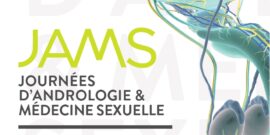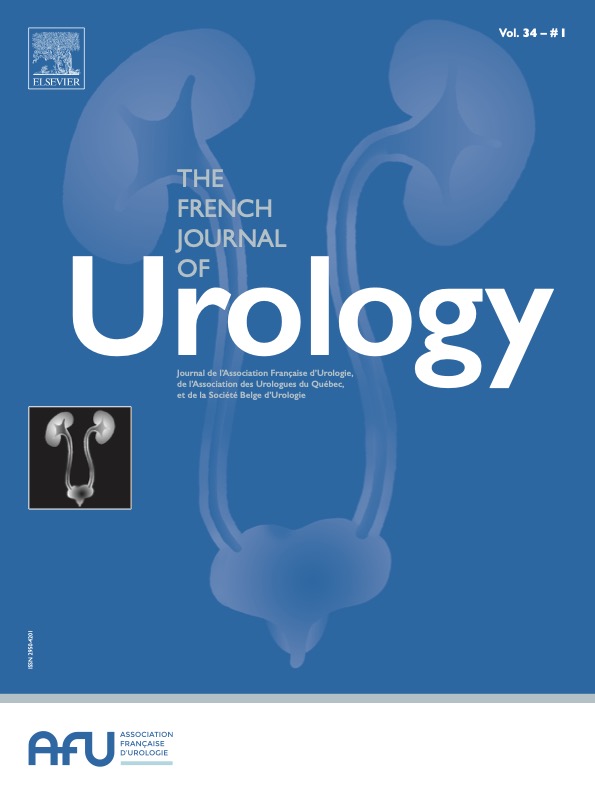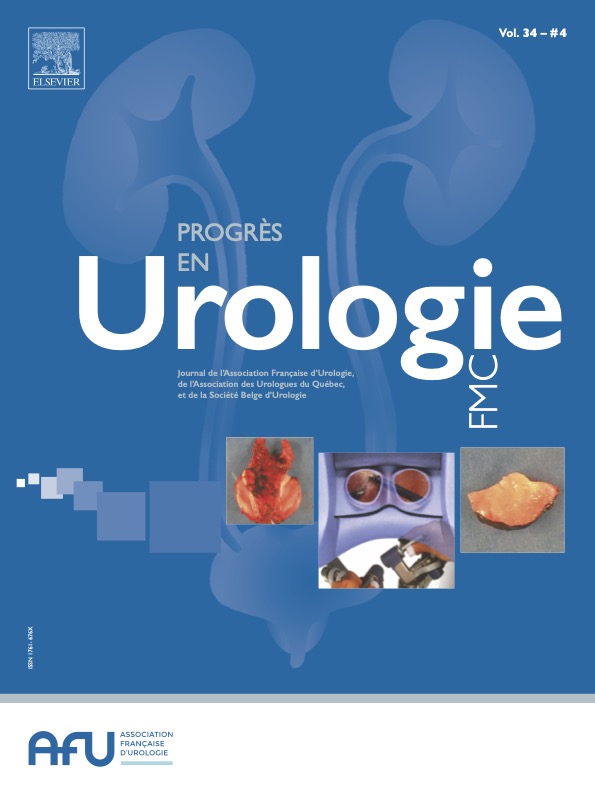| | | 2022 Recommendations of the AFU Lithiasis Committee: Postural therapy Recommandations 2022 du Comité lithiase de l’AFU : posturothérapie | | | | Postural therapy is a postural procedure to fight against the gravity phenomenon responsible for the non-elimination of lower calyceal stones. It allows improving or accelerating their elimination and increases the stone-free rate. It associates forced diuresis, postural inversion, and lumbar percussion, currently, in France, it is performed in some spa centers or by physiotherapists. The efficacy of postural therapy has been demonstrated for kidney stones in the lower calyces or in the pelvis: 50% of improvement and accelerated fragment expulsion [1] [level of evidence (LOE) 4] [2] (LOE4) [3] (LOE2) [4] (LOE2) [5] (LOE2) [6] (LOE4) [7] (LOE2) [8] (LOE1) [9] (LOE2) [10] (LOE2) [11] (LOE1) [12] (LOE2) [13] (LOE1) [14] (LOE2) [15] (LOE1) [16] (LOE1). This procedure combines forced diuresis (fluid load or diuretics), postural inversion >30° (45–60°) (to verticalize the lower calyx) and percussion (hydraulic, manual, or mechanical with a vibrating device) [17] (LOE4) [12] (LOE2) [18] (LOE4) [19] (LOE2) [1] (LOE4) [4] (LOE2) [3] (LOE2) [7] (LOE2). It is performed after extracorporeal shock wave lithotripsy (ESWL) or endoscopic treatment and may require several sessions [19] (LOE2) [9] (LOE2) [8] (LOE1) [3] (LOE2). The literature data are not clear on when the first session should start, but it can be performed within 3 days after the intervention, and on the optimal number of sessions [3] (LOE2) [4] (LOE2) [20] (LOE2). Although most studies did not report any important adverse effects, there is a potential risk of renal colic during fragment migration [3] (LOE2) [16] (LOE1). This risk suggests that it should not be performed in patients with fragments or stones>5mm. Despite its positive impact, postural therapy remains under-used in France. Indeed, access to spa centers is limited and only few physical therapy centers propose this approach because it remains unknown and not recognized (not included in the list of procedures reimbursed by the French health insurance system). Nevertheless, its use should be discussed to improve the elimination of residual fragments of lower calyceal stones after ESWL or ureterorenoscopy in the absence of contraindications and if available (Recommendation Table 1). La posturothérapie consiste en un procédé postural qui a comme objectif de lutter contre le phénomène de gravité responsable de la non-élimination de calculs caliciels inférieurs. Elle permet d’en améliorer ou d’en accélérer l’élimination et notamment d’augmenter taux de SFR. Elle associe cure de diurèse, inversion posturale et percussion lombaire et est réalisée en France jusqu’à présent soit dans certains centres de thermalisme, soit par certaines équipes de kinésithérapeutes. L’efficacité de la posturothérapie a été démontrée pour les calculs rénaux de siège caliciel inférieur ou pyélique avec une amélioration de 50 % et une accélération de l’élimination des fragments [1] (NP4) [2] (NP4) [3] (NP2) [4] (NP2) [5] (NP2) [6] (NP4) [7] (NP2) [8] (NP1) [9] (NP2) [10] (NP2) [11] (NP1) [12] (NP2) [13] (NP1) [14] (NP2) [15] (NP1) [16] (NP1). Elle nécessite l’association d’une diurèse forcée (apports hydriques ou diurétique), une inversion >30° (45–60°) (pour verticalisation du calice inférieur) et une percussion (hydraulique, manuelle ou mécanique à l’aide d’un appareil vibrateur) [17] (NP4) [12] (NP2) [18] (NP4) [19] (NP2) [1] (NP4) [4] (NP2) [3] (NP2) [7] (NP2). Elle est réalisée après traitement par LEC ou par endoscopie et peut nécessiter plusieurs séances [19] (NP2) [9] (NP2) [8] (NP1) [3] (NP2). Les données de la littérature ne sont pas claires vis-à-vis du délai de réalisation de la première séance, qui peut toutefois être effectuée dans les 3jours après traitement. Elles ne permettent pas non plus de définir un nombre optimal de séances [3] (NP2) [4] (NP2) [20] (NP2). Si la plupart des études ne démontrent pas de survenue d’effet indésirable notable, il existe potentiellement un risque de colique néphrétique lors de la migration des fragments [3] (NP2) [16] (NP1). Ce risque suggère par précaution de ne pas la réaliser en cas de fragments ou de calculs>5mm chacun.
| | Discussion du groupe de travail | Malgré son impact positif, la posturothérapie reste sous-utilisée. En effet l’accessibilité aux centres de cure thermale est limitée et les centres de kinésithérapie qui la pratiquent restent marginaux car elle reste méconnue et non reconnue (acte hors nomenclature). Son utilisation doit cependant être discutée pour améliorer l’élimination des fragments résiduels du calice inférieur après LEC ou URSS en l’absence de contre-indication et en cas d’accès à un centre qui la réalise (Tableau de recommandations 1). The authors declare that they have no competing interest. | | | |
Recommendation Table 1 - Postural therapy.
|

Tableau de recommandations 1 - Posturothérapie.
|
 | |
| Koşar A., Oztürk A., Serel T.A., Akkuş S., Unal O.S. Effect of vibration massage therapy after extracorporeal shockwave lithotripsy in patients with lower caliceal stones J Endourol 1999 ; 13 : 705-707 [cross-ref] | | | D’A. Honey R.J., Luymes J., Weir M.J., Kodama R., Tariq N. Mechanical percussion inversion can result in relocation of lower pole stone fragments after shock wave lithotripsy Urology 2000 ; 55 : 204-206 | | | Pace K.T., Tariq N., Dyer S.J., Weir M.J., R.J D.A.H. Mechanical percussion, inversion and diuresis for residual lower pole fragments after shock wave lithotripsy: a prospective, single blind, randomized controlled trial J Urol 2001 ; 166 : 2065-2071 [cross-ref] | | | Chiong E., Hwee S.T., Kay L.M., Liang S., Kamaraj R., Esuvaranathan K. Randomized controlled study of mechanical percussion, diuresis, and inversion therapy to assist passage of lower pole renal calculi after shock wave lithotripsy Urology 2005 ; 65 : 1070-1074 [inter-ref] | | | Ahmed A.F., Shalaby E., Maarouf A., Badran Y., Eladl M., Ghobish A. Diuresis and inversion therapy to improve clearance of lower caliceal stones after shock wave lithotripsy: a prospective, randomized, controlled, clinical study Indian J Urol 2015 ; 31 : 125-131 [cross-ref] | | | Faure A., Dicrocco E., Hery G., Boissier R., Bienvenu L., Thirakul S., et al. Postural therapy for renal stones in children: a Rolling Stones procedure J Pediatr Urol 2016 ; 12 : 252.e1-252.e6 | | | Long Q., Zhang J., Xu Z., Zhu Y., Liu L., Wang H., et al. A prospective randomized controlled trial of the efficacy of external physical vibration lithecbole after extracorporeal shock wave lithotripsy for a lower pole renal stone less than 2 cm J Urol 2016 ; 195 : 965-970 [cross-ref] | | | Wu W., Yang Z., Xu C., Gu X., Yang S., Liao S., et al. External physical vibration lithecbole promotes the clearance of upper urinary stones after retrograde intrarenal surgery: a prospective, multicenter, randomized controlled trial J Urol 2017 ; 197 : 1289-1295 [cross-ref] | | | Wu W., Yang Z., Tang F., Xu C., Wang Y., Gu X., et al. How to accelerate the upper urinary stone discharge after extracorporeal shockwave lithotripsy (ESWL) for <15 mm upper urinary stones: a prospective multi-center randomized controlled trial about external physical vibration lithecbole (EPVL) World J Urol 2018 ; 36 : 293-298 [cross-ref] | | | Jing S., Liu B., Lan W., Zhao X., Bao J., Ma J., et al. Modified mechanical percussion for upper urinary tract stone fragments after extracorporeal shock wave lithotripsy: a prospective multicenter randomized controlled trial Urology 2018 ; 116 : 47-54 [inter-ref] | | | Liu L.R., Li Q.J., Wei Q., Liu Z.H., Xu Y. Percussion, diuresis, and inversion therapy for the passage of lower pole kidney stones following shock wave lithotripsy Cochrane Database Syst Rev 2013 ; | | | Lee S.W., Chaiyakunapruk N., Chong H.Y., Liong M.L. Comparative effectiveness and safety of various treatment procedures for lower pole renal calculi: a systematic review and network meta-analysis BJU Int 2015 ; 116 : 252-264 [cross-ref] | | | Zeng T., Tiselius H.G., Huang J., Deng T., Zeng G., Wu W. Effect of mechanical percussion combined with patient position change on the elimination of upper urinary stones/fragments: a systematic review and meta-analysis Urolithiasis 2020 ; 48 : 95-102 [cross-ref] | | | Peng L., Wen J., Zhong W., Zeng G. Is physical therapy effective following extracorporeal shockwave lithotripsy and retrograde intrarenal surgery: a meta-analysis and systematic review BMC Urol 2020 ; 20 : 93 | | | Xu Z.H., Zhou S., Lv J.L., Wang H. Effect of the external physical vibration lithecbole on the discharge of upper urinary stones: a systematic review and meta-analysis Urol J 2021 ; 18 : 19-27 [cross-ref] | | | Yuan C., Jian Z., Jin X., Ma Y., Li H., Wang K. Efficacy and safety of external physical vibration lithecbole after extracorporeal shock wave lithotripsy or retrograde intrarenal surgery for urinary stone: a systematic review and meta-analysis J Endourol 2021 ; 35 : 712-720 [cross-ref] | | | Thomas J. Hydroposturotherapy and residual lithiasis after lithotripsy Prog Urol 2000 ; 10 : 1152-1155 | | | Albanis S., Ather H.M., Papatsoris A.G., Masood J., Staios D., Sheikh T., et al. Inversion, hydration and diuresis during extracorporeal shock wave lithotripsy: does it improve the stone-free rate for lower pole stone clearance? Urol Int 2009 ; 83 : 211-216 [cross-ref] | | | Leong W.S., Liong M.L., Liong Y.V., Wu D.B., Lee S.W. Does simultaneous inversion during extracorporeal shock wave lithotripsy improve stone clearance: a long-term, prospective, single-blind, randomized controlled study Urology 2014 ; 83 : 40-44 [inter-ref] | | | Zhang Y., Xu C., Wang Y., Wang R., Wu W., Yan J., et al. When is the best time to perform external physical vibration lithecbole (EPVL) after retrograde intrarenal surgery (RIRS): a multi-center study based on randomized controlled trials Urolithiasis 2020 ; 48 : 533-539 [cross-ref] | |
| | | | | |
© 2023
Elsevier Masson SAS. Tous droits réservés. | | | | |
|









